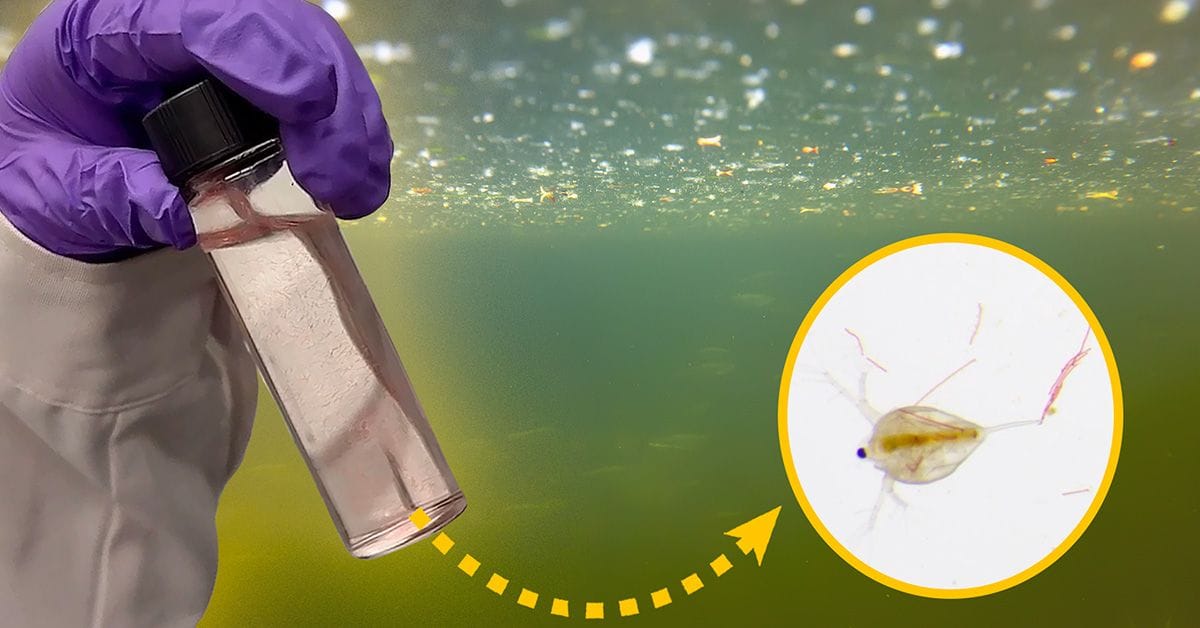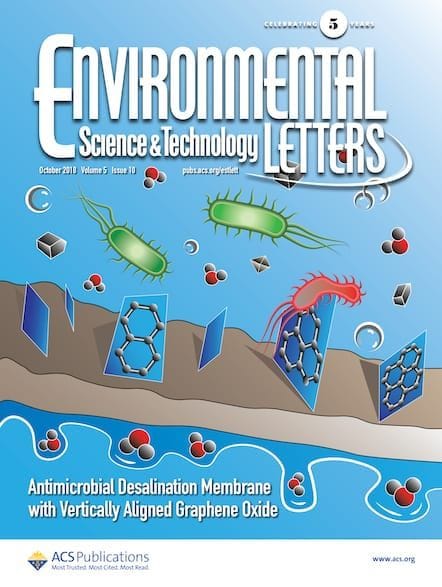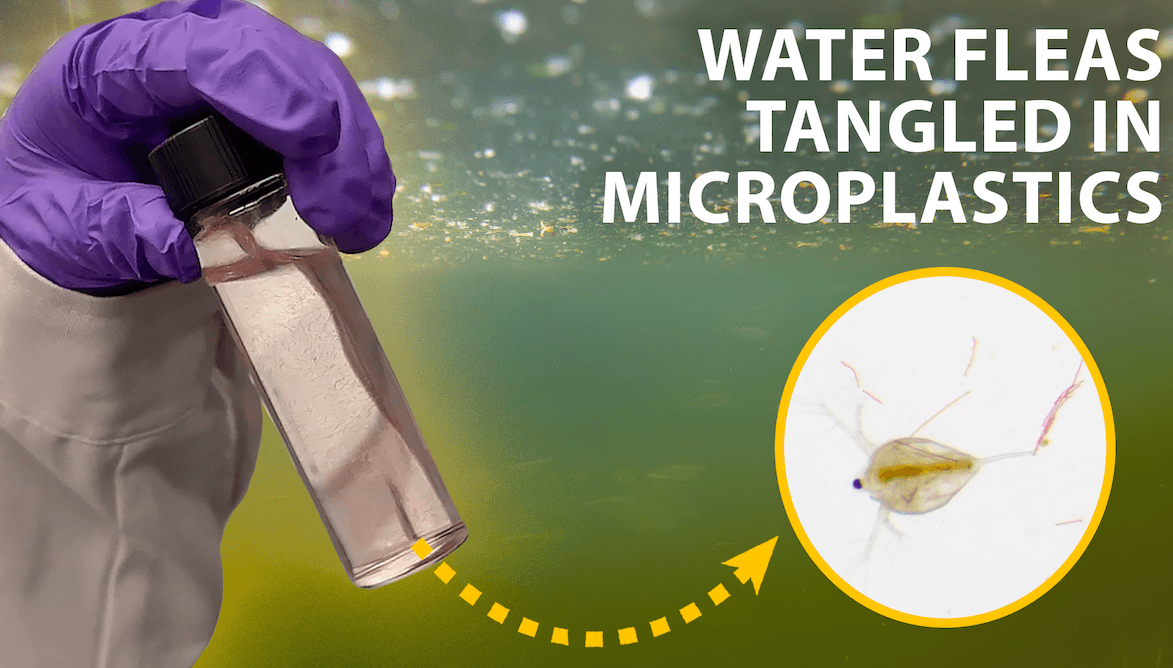We often hear reports of wildlife becoming entangled in discarded bags, fishing nets, and other plastic waste. Now, researchers have set out to explore how this entanglement is happening on a micro level.

Plastic pollution is a growing environmental concern, with microplastics (defined as fragments smaller than 5 millimeters) presenting a substantial threat to many ecosystems.1 This is a frequently covered topic here on ACS Axial, as new discoveries continue to be uncovered—from how plastics break down, how long they persist, and how they interact with systems in the wild.
One of these is the issue of entanglement, which has not yet been reported in the context of microplastics and small organisms but intuitively seems likely to be occurring. To explore this further, a team of researchers in Switzerland and China set out to investigate whether tangling might play an important yet overlooked role in how microplastics and aquatic organisms interact, with their focus on daphnia—the water flea.2
These small creatures represent something of a sentinel species that can act as an early warning system for ecosystem health.3 Over seven days, the researchers exposed small numbers of daphnids in tanks with a food source to increasing concentrations of fibrous and fragmentary microplastics. Their results, published in Environmental Science & Technology Letters, reveal that microplastics with a fibrous surface tended to get tangled in the fleas’ antennae and tail claws, whereas smoother fragments adhered to the creature’s surface but did not cause tangling. Much like the tangling experienced by larger aquatic animals or birds which can bind fins or wings and affect movement, the microplastics affected the fleas' swimming ability, slowing their speed and making their trajectories less precise and with a narrower range.
Watch a Headline Science video below, created by the ACS Science Communications team, illustrating how this entanglement occurs:
This research is important, as it is one of the first to demonstrate that microplastics are having an effect on animals beyond ingestion. Movement is a fundamental aspect of an organism’s behavior, and hampering it impacts the ability to find food and evade predators.4 Microplastic tangling at the microorganism level could potentially knock out segments of the food web and pose a substantial threat to aquatic communities. Leaching from plastics has also been shown to decrease hatching rate and obvious neurotoxicity in zebrafish.5 Beyond the health of aquatic environments, prominent research has suggested that declines in marine biodiversity are also a key factor in climate disruption.6
Knowing this, we need to identify the routes by which microplastics are entering the environment. The abrasion of synthetic textile fibers is a significant factor, with microfibers accounting for 80–90% of environmental microplastics.7 These are exactly the kind of fibrous microplastics that were tangling in the daphnia experiment, so that figure is pretty worrying. Release of microfibers from textiles is enhanced when there is a mechanical force such as abrasion or friction. For example, a polyester fabric will release 10 times more fibers with abrasion than when washed and dried without.8 The same goes for the kind of polymer sponge that might be sitting by your kitchen sink, designed specifically for scrubbing different surfaces but almost certainly sending microplastics down the drain every time.
As research reveals the specific threats posed by different microplastics, it becomes clear that comprehensive strategies are needed to address this pervasive issue. Reducing synthetic textile fiber abrasion and rethinking everyday products are essential steps in safeguarding both our aquatic ecosystems and overall environmental health.

